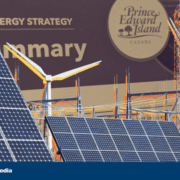United Kingdom — China has retained the pole position when it comes to progress toward an electric vehicle (EV) future, according to the latest EY Electric Vehicle Country Readiness Index.
The Index looks at the preparedness of the top 20 vehicle markets for the arrival of EVs based on supply, demand and regulation. Norway remains in second place for the second year running, while the US, Sweden and the UK round out the top five.
Battery manufacturing and supply chain control remain key drivers for China leading the way, with China accounting for 74% of investment in battery manufacturing in 2022. Backed by soaring consumer demand – 58% of Chinese consumer respondents expect to buy an EV as their next vehicle, compared to the average of 41% across other markets – and investment in its charging infrastructure, China continues to lead the way on EVs, representing the largest EV market globally in absolute volume terms.
Norway, an early adopter of EVs, remains steady at number two in the ranking as the country’s EV adoption rate rises to 81%, the highest in the world. This owes to continued generous EV incentives and relatively high GDP per capita, meaning EVs are more affordable. In Norway, 83% of vehicles launched between 2022 and 2027 will be EVs, the highest in the world. Meanwhile, the US, Germany and Sweden retain their strengths in manufacturing, investment and consumer uptake.
Randy Miller, EY Global Advanced Manufacturing & Mobility Leader, says: “China and Norway have demonstrated that a potent mix of regulation to stimulate demand, combined with localized battery production and implementation of a robust infrastructure plan are critical factors in helping countries successfully transition to EVs. Now that demand is at sufficient levels in most of the countries in this study, it is up to OEMs and government to accelerate their efforts to expand EV production, investment and incentives.”
EVs making inroads in the US market
The US has risen sharply in the ranking, from seventh to third. Business has been a key driver of this rise with new innovations in car models and investment in battery manufacturing providing a greater supply and variety of EVs to the US market. This, combined with the greater affordability resulting from streamlined production and greater supply, has caused consumer demand to rise steadily. These significant steps forward by businesses have been backed up by government regulation. For example, the Inflation Reduction Act has introduced a federal tax credit of up to $7,500 for EVs assembled locally and purchased from December 2022 to January 2033. The US now accounts for 11% of EV production globally, behind only China which accounts for 55%.
Miller says: “The US is rapidly rising through the rankings due to businesses innovation and investment in EVs and the manufacturing capability to support them. This has in turn increased consumer choice and made EVs more affordable and more attractive options for consumers. This business-first approach has also been backed by friendly government regulation, providing a holistic approach which is preparing the US for the electric future.”
Demand rising, but not fast enough
Globally, EV demand continues to rise steadily due to factors such as the high availability of performance EVs, the rapid expansion of charging infrastructure, and the reduction of “range anxiety”. Norway leads with an EV uptake with 81% of new vehicle registrations being EVs, followed by Sweden at 53% and the Netherlands at 35%. China and the US lead in absolute EV sales, with nearly 8.3 and 1.5 million units projected in EV sales in 2023, respectively. However, EV sales have witnessed a slow growth in the first half of 2023 in major markets like China, the US and Germany, as the acceleration of EV production due to streamlined supply chains has outpaced immediate consumer demand.
Though the US has shot up the rankings, its EV adoption remains at just 10%. This can be attributed to lingering consumer concerns including “range anxiety” and the affordability of EVs, with the EY Mobility Consumer Index showing that 48% of US consumers surveyed intended to purchase an EV, compared to a global average of 55%. However, favourable government incentives to expand charging infrastructures and schemes such as EV leasing are expected to boost consumer confidence.
On the right track, but room for improvement
The UK remains in fifth but is encountering challenges due to battery manufacturers and auto original equipment manufacturers (OEMs) withdrawing investments. These decisions are primarily driven by more attractive incentives offered in the US and China. However, the government’s ambitious endeavour to phase out internal combustion engine (ICE) vehicles by 2030, ahead of European markets, is expected to bolster demand for battery electric vehicles (BEVs) and plug-in hybrid electric vehicles (PHEVs).
Germany’s fall from fourth last year to eighth this year can largely be attributed to the decrease in available subsidies for EVs and expectations that demand will shrink, particularly from businesses. Germany also needs to increase charging infrastructure, with its ratio of EVs to EV charging stations currently at 26 to one, contrasting sharply with that of Netherlands (four to one), Italy (ten to one) and France (13 to one).
Despite having the third highest proportion of respondents looking to buy an EV as their next vehicle (43%), Italy continues to lag its European neighbors at 12th position. This is mainly due to a lack of charging infrastructure and an energy ecosystem needing improvement.
Japan remains stubbornly low in the rankings in 15th. Japan has seen the sharpest drop in demand of any countries included in the Index. A conservative stance on EV adoption, favoring strong hybrids over BEVs, coupled with lagging investments from major local OEMs has resulted in an adoption rate of just 3% in 2023 and only 19% of consumers intending to purchase an EV as their next vehicle, compared to the Index average of 41%.










Comments